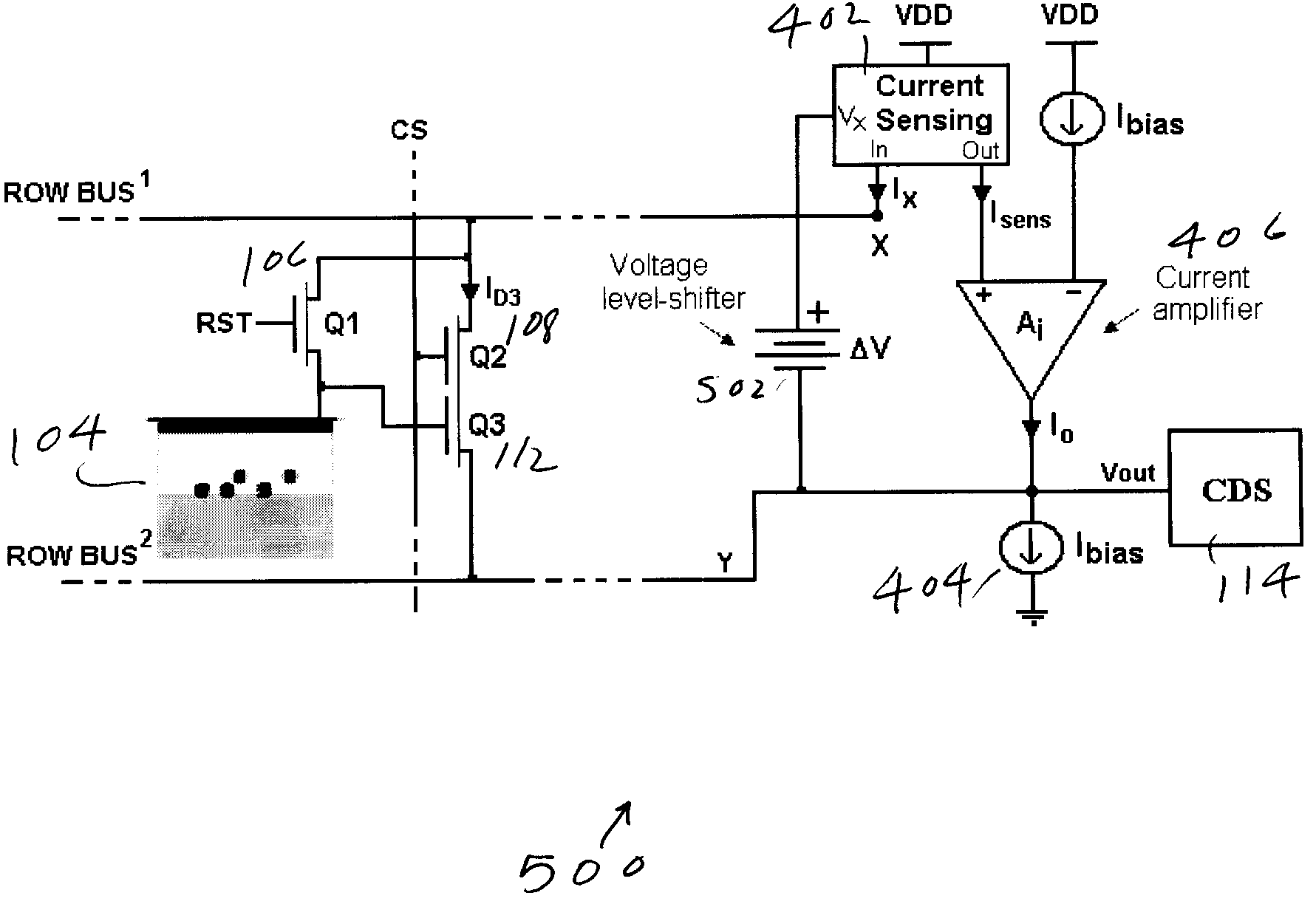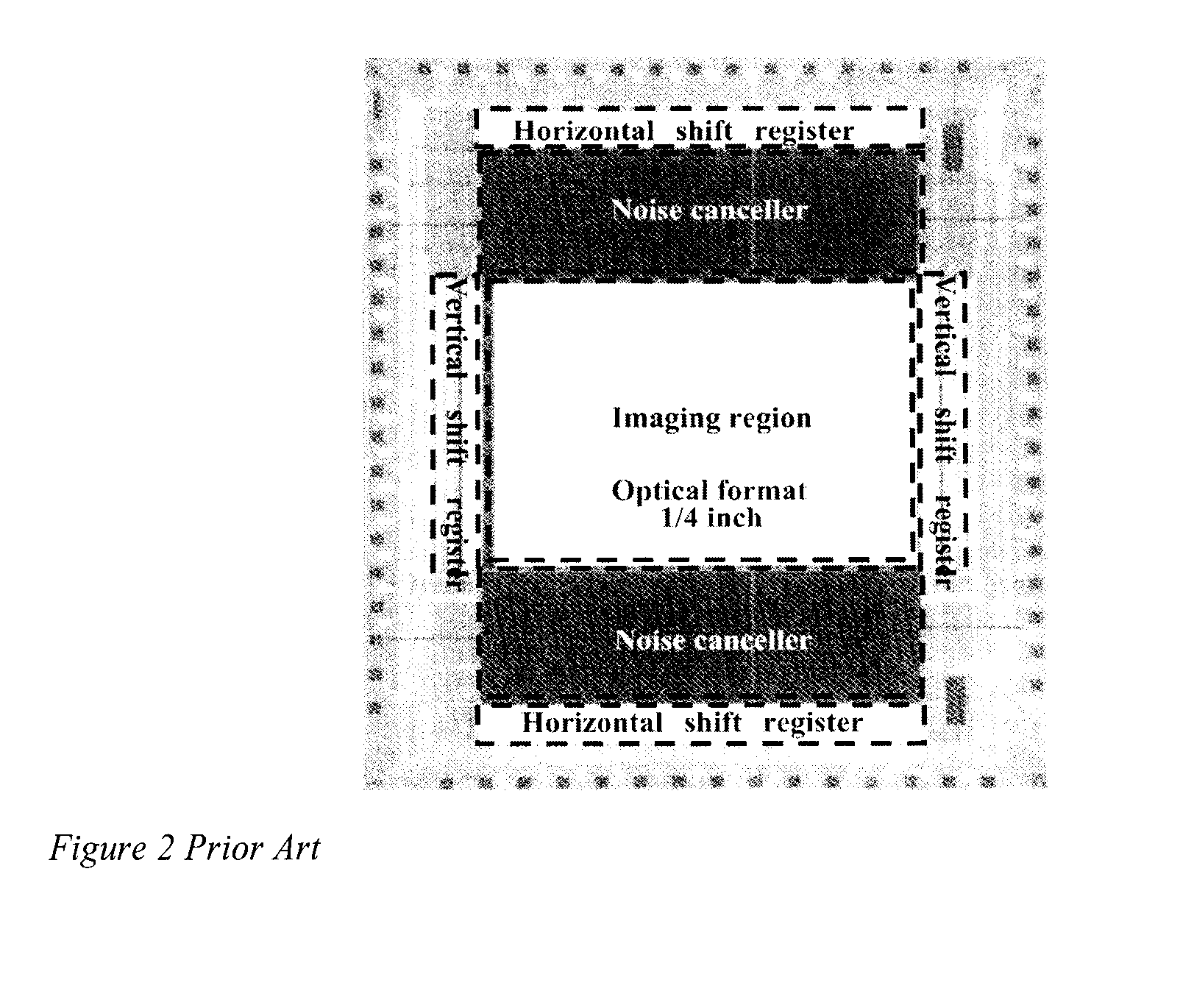CMOS image sensor readout employing in-pixel transistor current sensing
a technology of transistor current sensing and image sensor, which is applied in the field of cmos image sensor, to achieve the effects of reducing read noise, increasing readout speed, and reducing frame ra
- Summary
- Abstract
- Description
- Claims
- Application Information
AI Technical Summary
Benefits of technology
Problems solved by technology
Method used
Image
Examples
Embodiment Construction
[0047]Preferred embodiments of the present invention will be set forth in detail with reference to the drawings, in which like reference numerals refer to like elements throughout.
[0048]A general CSAP architecture configured for pixel readout operation is shown in FIG. 4 as 400. The pixel is selected by asserting the transistor Q2108, which connects the amplification transistor Q3112 to the out-of pixel part of the readout circuit. The drain terminal of the transistor Q3112 is connected through ROW_BUS1 line to an external current sensing circuit 402. The source terminal of Q3 is connected to the biasing current source Ibias 404 and the output of the current feedback circuit (current amplifier) 406. The sensing circuit might be used to hold the potential VX of the ROW_BUS1 line to a fixed value. Consequently the parasitic capacitance of the ROW_BUS1 line does not influence the circuit speed. Also, if the potential of the ROW_BUS1 line VX is held fixed, there would be no additional c...
PUM
 Login to View More
Login to View More Abstract
Description
Claims
Application Information
 Login to View More
Login to View More - R&D
- Intellectual Property
- Life Sciences
- Materials
- Tech Scout
- Unparalleled Data Quality
- Higher Quality Content
- 60% Fewer Hallucinations
Browse by: Latest US Patents, China's latest patents, Technical Efficacy Thesaurus, Application Domain, Technology Topic, Popular Technical Reports.
© 2025 PatSnap. All rights reserved.Legal|Privacy policy|Modern Slavery Act Transparency Statement|Sitemap|About US| Contact US: help@patsnap.com



